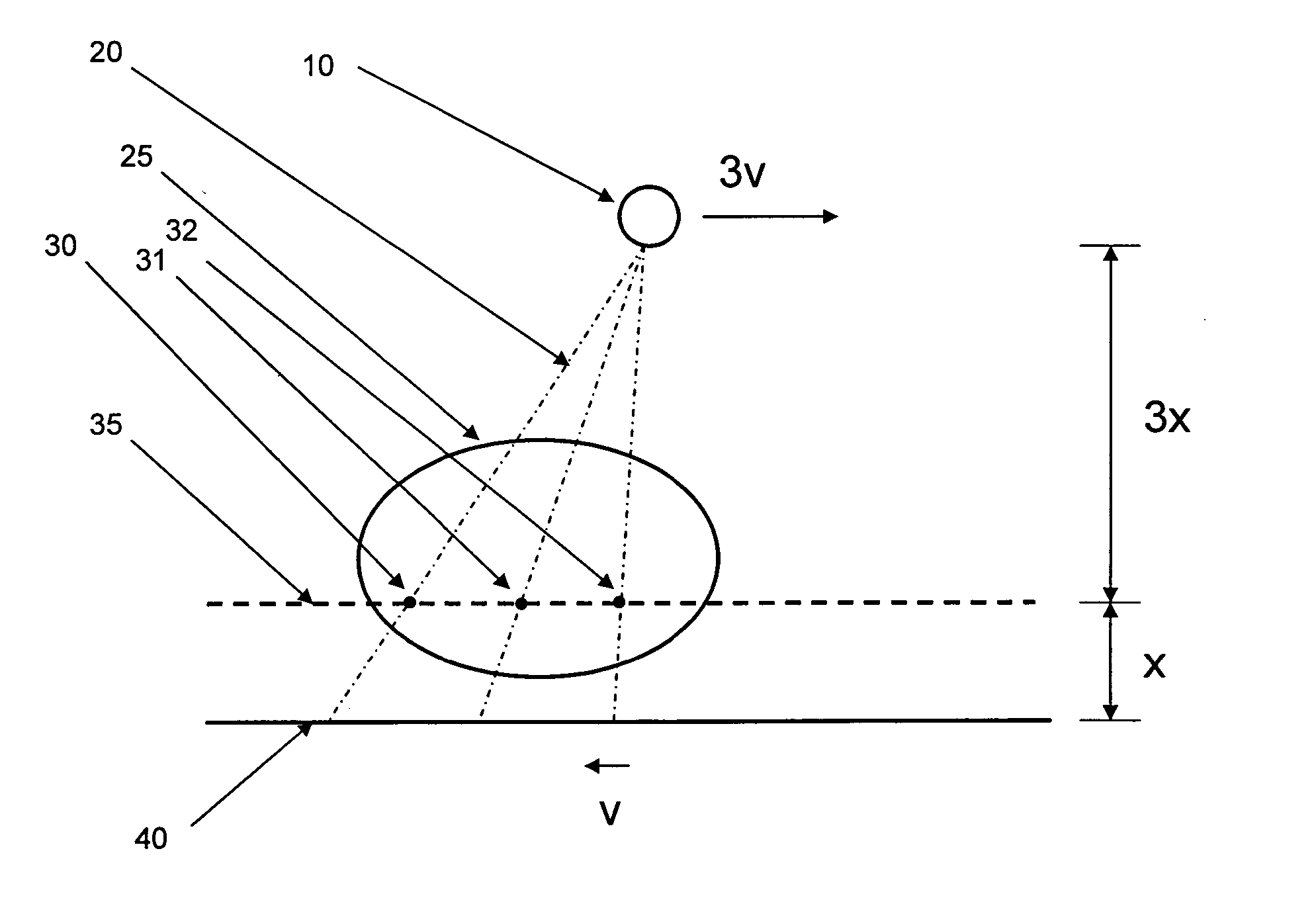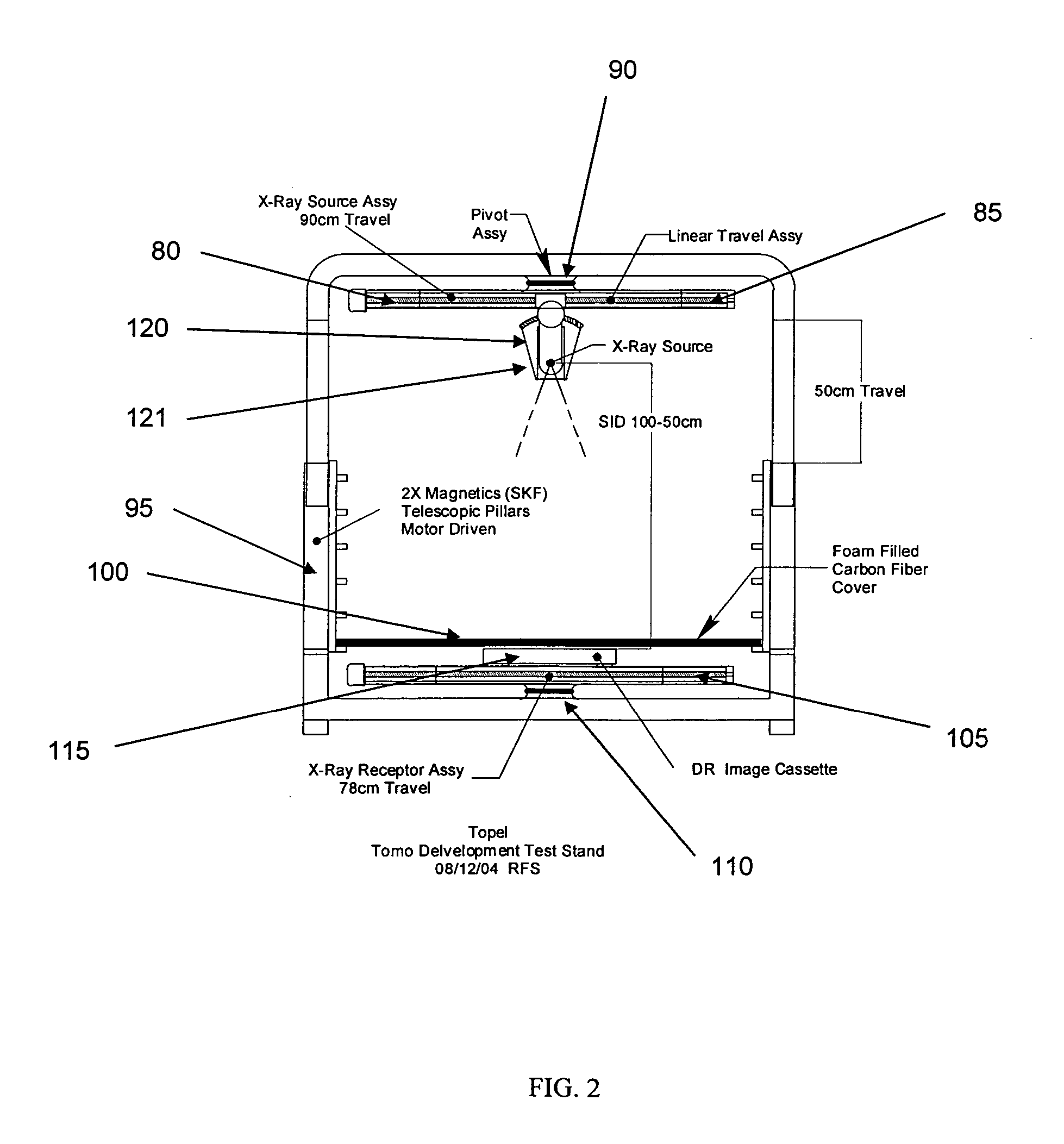Digital x-ray tomosynthesis system
a digital x-ray and tomosynthesis technology, applied in tomography, instruments, applications, etc., can solve the problems of limited clinical deployment of the gt method, limited spatial resolution and detective quantum efficiency of image performance of earlier image intensifier tubes, and limited clinical deployment. , to achieve the effect of reducing the total number of digital projection radiographs, minimizing the total x-ray dose, and reducing image aliasing artifacts
- Summary
- Abstract
- Description
- Claims
- Application Information
AI Technical Summary
Benefits of technology
Problems solved by technology
Method used
Image
Examples
Embodiment Construction
Hardware
[0022] Preferred embodiments of the DXT system hardware are displayed in FIG. 2. X-ray source 120 is attached to linear translation stage 85 which is attached to pivot assembly 90. This enables the x-ray source 120 to be selectively positioned along a plane at the top of the DXT system so that x-ray source assembly 121 can be move left and right from its central position show in FIG. 1. In addition, the x-ray source 120 can be selectively tilted about pivot point 119 for each position of the x-ray source along the dimension of the translation stage 85, in order to direct the cone of x-rays directly at the object to be imaged. Digital x-ray image sensor 115 is positioned on linear translation stage 105 which is attached to pivot assembly 110. This enables the digital x-ray image sensor 115 to be selectively positioned along a plane at the base of the DXT system. The source-to-image distance (SID) is adjustable in the range of 50-100 cm by the use of telescopic pillars 95 sup...
PUM
| Property | Measurement | Unit |
|---|---|---|
| distance | aaaaa | aaaaa |
| heights | aaaaa | aaaaa |
| thick | aaaaa | aaaaa |
Abstract
Description
Claims
Application Information
 Login to View More
Login to View More - R&D
- Intellectual Property
- Life Sciences
- Materials
- Tech Scout
- Unparalleled Data Quality
- Higher Quality Content
- 60% Fewer Hallucinations
Browse by: Latest US Patents, China's latest patents, Technical Efficacy Thesaurus, Application Domain, Technology Topic, Popular Technical Reports.
© 2025 PatSnap. All rights reserved.Legal|Privacy policy|Modern Slavery Act Transparency Statement|Sitemap|About US| Contact US: help@patsnap.com



